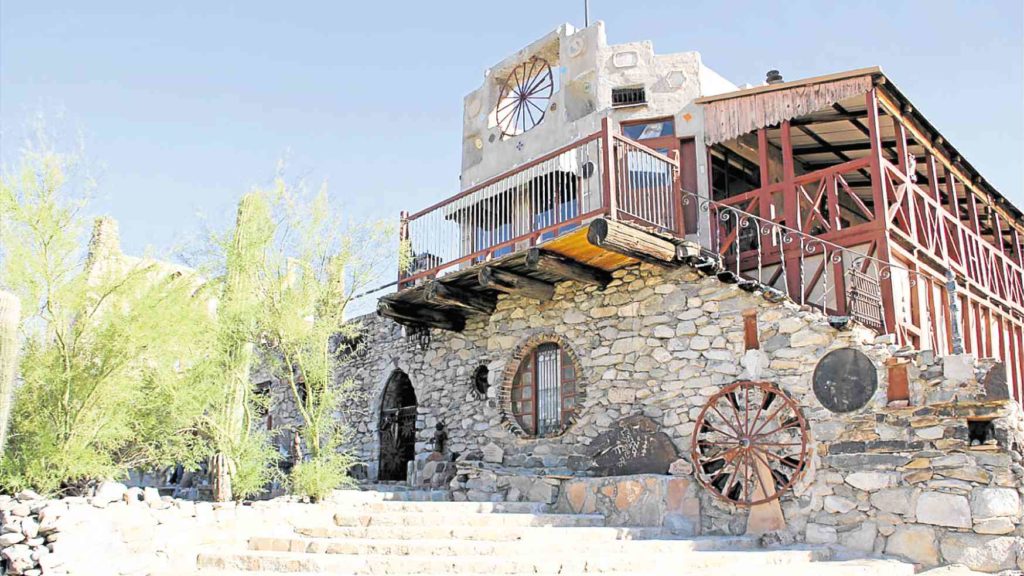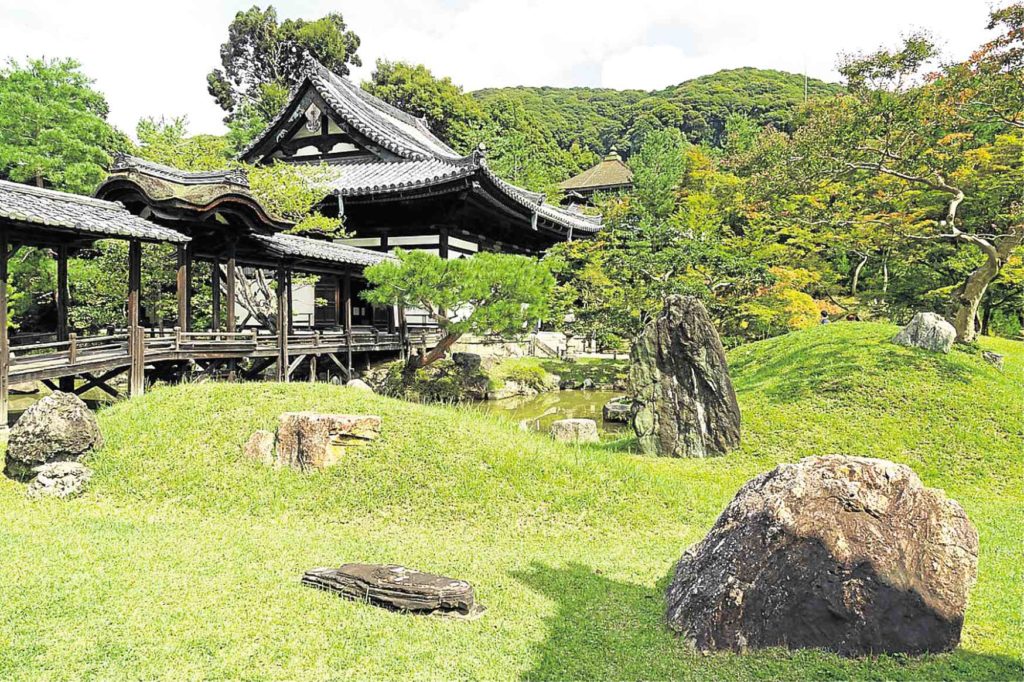Public displays of affection

The Mystery Castle in Arizona exemplifies a father’s love for his daughter.
People express love in many ways. Flowers, jewelry, chocolates—these are only some of the more common Valentine’s Day gifts. Every now and then, however, people with the means take it to the extreme. They choose to express their affection through some of man’s largest creations—buildings.
The Taj Mahal is probably one of the most famous examples of this in the world. Beyond this icon, however, many other buildings tell tales of devotion between lovers, and among families and friends. These structures show that architecture can be a medium to express emotions.
A mansion for a beloved bride
Some women have all the luck when it comes to wedding gifts. In 1907, as a gift to his new wife, Chester Thorne purchased a 400-year old mansion in England. As the Thornes lived in Washington, the husband wanted to have the mansion relocated to America. Brick by brick, the whole house was dismantled and shipped to Washington to become part of Thornewood Castle.
The resulting manor boasts of 22 bedrooms and 22 baths. It also features a well-kept English garden designed by the landscape architectural firm Olmsted Brothers.
It still stands in full splendor today, a venue for many weddings and film shoots. In particular, it was used as the setting of a Stephen King television mini-series entitled “Rose Red.” The castle shows how far one man can go to tell the world of his love for his wife.
A castle for a princess
Mystery Castle, a quirky home in Arizona, stands as a tribute to a father’s promise to his little girl.
In the 1930’s, Boyce Luther Gally enthralled his daughter Mary Lou with fairy tales. He told his little girl she was going to have a castle one day. Some years later, misfortune hit when the father was diagnosed with tuberculosis.
He moved away from his family not long after, choosing to live alone in the desert.
In 1946, Mary Lou, now a full-grown woman, received a letter from her father on his deathbed. He summoned her to the desert to receive a remarkable inheritance.
Mary Lou discovered a castle-like structure built by her father during his last 16 years. Made out of found materials, the building harbored small treasures in its crevices, from gold nuggets to minted coins. It had unique features such as having 13 fireplaces, and a sun deck ledge. Though it did not include toilets or utilities, it was livable and had suited the whims of an imaginative child.
The structure also contained a locked trapdoor that offered some mystery. Its creator explicitly instructed that it be opened only in 1948 by Mary Lou.
Upon opening, the door revealed a box containing some valuables, two letters, a valentine and a photo of the father. The letter explained how Boyce built the castle for his daughter. The valentine, a gift from Mary Lou that her father kept through the years, simply said, “I love you.”
Mary Lou lived in her father’s “castle” until her death in 2010. The building is now called Mystery castle and is open to the public for tours.
A tribute to a fallen husband

The Kodai-Ji temple in Japan was built by a widow for her military husband.
The Kodai-Ji Temple in Kyoto, Japan was borne from a woman’s love for her powerful husband. Built in 1606, the structure was built by Kita-no-Mandokoro as a shrine to the memory of the late Toyotomi Hideyoshi.
Hideyoshi was a general who led successful battles across his country in the late 16th century. Upon his death, Mandokoro went about developing a garden complex to house his remains.
The complex consists of a memorial hall, a main building, and a temple garden. The memorial hall pays tribute to the husband and wife with a throne and a small shrine. The main building, meanwhile, is adorned with makie, or gold-sprinkled lacquer artwork.
These pieces depict Hanakaida, or rafts with flowers, to symbolize the continuous flow of life. Lastly, the temple garden is illuminated at night to highlight its colorful trees and stunning scenery.
Today, the Kodai-Ji temple is considered an important cultural property of Kyoto. Despite its age, the place is well-preserved and was made accessible to the public.
Architecture built by love
These buildings are only some of the grandest gestures made by people in love. They go to show how love can last beyond a lifetime in built form.
Beyond romance, these structures testify to promises made beyond death. Though the people behind the creations are long gone, the architecture ensures that their love stories will be told for years to come.
(The author is a licensed architect who studied abroad and currently works for DSFN Architects. She sees all buildings as a way of fulfilling love for a certain something or someone in life.)
Sources:
663highland, Joe Mabel, www.thornewoodcastle.com, www.mymysterycastle.com
pp. 117-125. “Life Visits a Mystery Castle.” LIFE Magazine. 26 Jan 1948. ISSN 0024-3019
www.kodaiji.com , www.japan-guide.com














